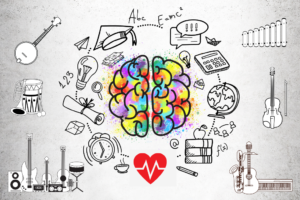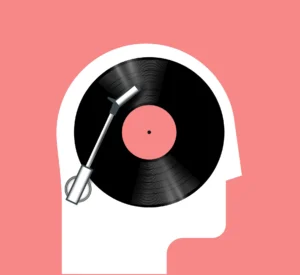Music holds an extraordinary power over human emotions and well-being. Its influence transcends cultural boundaries, resonating with individuals on a deeply personal level. From the soothing melodies of classical compositions to the pulsating beats of contemporary pop, music has the ability to evoke a wide spectrum of emotions and contribute significantly to our overall health and wellness. You can listen to music in the car that you can rent from the rentacar Beograd company.
Impact on Emotional Well-being

Music has long been recognized for its profound impact on emotional well-being. The rhythmic patterns and melodic harmonies can trigger a range of emotions, from joy and excitement to sadness and nostalgia. Research has shown that listening to music activates various regions of the brain associated with emotion processing, such as the amygdala and prefrontal cortex. These neural responses can lead to profound emotional experiences, providing a therapeutic outlet for individuals coping with stress, anxiety, or depression.
Moreover, music has the remarkable ability to evoke memories and evoke powerful emotions associated with past experiences. A familiar song from childhood or a significant life event can transport individuals back in time, eliciting a strong emotional response. This phenomenon, known as music-evoked autobiographical memory, highlights the intricate connection between music, memory, and emotion. Harnessing the power of music can thus serve as a valuable tool in emotional self-regulation and coping mechanisms. Playing music can help you also in the business world if you can use it to get more ideas. You can also get help from a web application development company for your business.
Furthermore, music has been shown to play a crucial role in fostering empathy and social connection. Shared musical experiences, such as attending concerts or participating in group singing, can create a sense of unity and belonging among individuals. The communal enjoyment of music promotes empathy and understanding, as listeners are able to resonate with the emotions expressed in the music and connect with others on a deeper level. In this way, music serves as a powerful medium for emotional expression and interpersonal communication, enriching social interactions and enhancing overall well-being. If you want to add a photo of your favorite music artist to your car, you should get mobile detailing services in Carlsbad CA.
Physical and Mental Health Benefits
Beyond its impact on emotional well-being, music has been shown to offer a myriad of physical and mental health benefits. Studies have demonstrated that listening to music can lower heart rate, blood pressure, and cortisol levels, thereby reducing stress and promoting relaxation. Certain genres of music, such as classical and ambient, are particularly effective in inducing a state of calmness and tranquility.
Moreover, engaging in music-making activities, such as playing an instrument or singing, can enhance cognitive function and neuroplasticity. Learning to play an instrument, for instance, requires coordination, concentration, and memory recall, stimulating various areas of the brain and fostering neural connections. This cognitive stimulation has been associated with improved executive function, memory retention, and overall mental acuity, particularly in older adults.
Additionally, music therapy has emerged as a valuable therapeutic intervention for individuals with mental health conditions such as depression, anxiety, and post-traumatic stress disorder (PTSD). Music therapy techniques, including improvisation, lyric analysis, and guided imagery, have been shown to alleviate symptoms, improve mood, and enhance coping skills in clinical populations. By integrating music into therapeutic interventions, mental health professionals can effectively address the psychological needs of their clients and promote holistic healing. If you can’t listen to music since you have issues with your roof, call the sentry roofing company.
Social and Cultural Significance
In addition to its profound effects on individual well-being, music plays a pivotal role in shaping social interactions and cultural identity. Throughout history, music has served as a means of communication, storytelling, and communal expression, bringing people together across diverse backgrounds and traditions. Whether through religious rituals, celebratory ceremonies, or everyday leisure activities, music serves as a universal language that transcends linguistic barriers and fosters social cohesion.
Moreover, music serves as a reflection of cultural values, beliefs, and societal norms. Different genres of music often carry distinct cultural meanings and symbolisms, reflecting the unique experiences and perspectives of a particular community or group. Through the sharing and appreciation of music, individuals gain insight into the diversity of human experiences and forge connections with others who share similar musical tastes and interests.
Furthermore, music has the power to challenge social norms and inspire social change. Throughout history, musicians and artists have used their platforms to address pressing social issues, advocate for justice, and promote equality. From protest songs of the civil rights movement to contemporary anthems of activism, music has served as a powerful tool for social and political mobilization, galvanizing individuals to take action and effect positive change in society. By harnessing the collective power of music, communities can amplify marginalized voices, challenge oppressive systems, and strive toward a more equitable and inclusive world. Apart from music, you can also try a CPI course online to feel better by getting some knowledge.
The Evolution of Music: From Ancient Rituals to Modern Innovation

The evolution of music spans millennia, reflecting the dynamic interplay of culture, technology, and creativity. From the rhythmic chants of ancient rituals to the complex compositions of contemporary genres, music has continuously evolved in response to changing social, technological, and artistic trends. Throughout history, advancements in musical instruments, notation systems, and recording technologies have expanded the possibilities of musical expression, allowing composers and performers to push the boundaries of innovation and experimentation. The evolution of music not only reflects the cultural diversity and interconnectedness of human societies but also serves as a testament to the enduring power of artistic expression to transcend temporal and spatial boundaries.
Music has always been deeply intertwined with human culture and society, serving as a means of communication, celebration, and spiritual expression. In ancient civilizations such as Mesopotamia, Egypt, and Greece, music played a central role in religious rituals, civic ceremonies, and communal gatherings. From the sacred hymns of Sumerian temples to the epic poems of Homeric Greece, music served as a conduit for divine inspiration, cultural identity, and social cohesion. As civilizations developed and expanded, so too did the diversity and complexity of musical styles and traditions, resulting in a rich tapestry of musical heritage that continues to resonate with audiences around the world.
With the advent of technological innovations such as the printing press, the phonograph, and digital recording, music became more accessible and pervasive than ever before. The rise of radio, television, and the internet democratized the dissemination of music, allowing artists to reach global audiences and listeners to discover new genres and sounds. Moreover, advancements in music production software, synthesizers, and digital sampling revolutionized the creative process, blurring the boundaries between musical genres and expanding the sonic palette available to artists. Today, we find ourselves in an era of unprecedented musical diversity and experimentation, where artists draw inspiration from a wide range of influences and traditions to create innovative and boundary-pushing music that reflects the complexities of our modern world.
Music as Therapy: Healing Through Sound and Expression
Music therapy has emerged as a powerful therapeutic modality for individuals facing a wide range of physical, emotional, and cognitive challenges. Rooted in the belief that music has the power to engage, soothe, and heal, music therapy interventions utilize a variety of techniques to address the unique needs and goals of each client. Whether through active music-making, receptive listening, or improvisational exploration, music therapists work collaboratively with clients to promote self-expression, emotional processing, and psychosocial well-being. Research has shown that music therapy can be effective in reducing symptoms of depression, anxiety, and chronic pain, as well as improving communication skills, social interactions, and overall quality of life. As the field of music therapy continues to grow and evolve, its potential to facilitate healing and transformation remains a source of hope and inspiration for individuals of all ages and abilities.
The therapeutic benefits of music have been recognized since antiquity, with ancient civilizations such as Egypt, Greece, and China employing music as a form of healing and spiritual practice. In the early 20th century, pioneers such as Mary P. Rogers and Eva Augusta Vescelius laid the foundation for modern music therapy by incorporating music into clinical settings to treat patients with mental and physical disabilities. Since then, music therapy has grown into a diverse and interdisciplinary field, with practitioners working in hospitals, schools, community centers, and private practice settings to address a wide range of clinical populations and therapeutic goals. To charge your car so you can play more music in it, use the solar EV charging station.
One of the key principles of music therapy is its emphasis on individualized and client-centered care, where interventions are tailored to meet the unique needs, preferences, and strengths of each client. Through collaborative goal-setting and ongoing assessment, music therapists develop personalized treatment plans that integrate a variety of musical experiences and techniques, such as songwriting, improvisation, and lyric analysis. By engaging clients in creative and expressive activities, music therapy provides a safe and supportive environment for exploring emotions, building self-awareness, and developing coping skills. Moreover, music therapy can enhance interpersonal relationships and social connections, as clients engage in shared musical experiences with therapists, peers, and family members.
The Neuroscience of Music: Exploring the Brain’s Musical Pathways
Advancements in neuroscience have deepened our understanding of how music is processed and perceived in the brain. Through techniques such as functional magnetic resonance imaging (fMRI) and electroencephalography (EEG), researchers have identified specialized neural networks involved in music perception, production, and emotional processing. For example, the auditory cortex processes basic elements of sound such as pitch and rhythm, while regions of the brain associated with emotion regulation, memory, and reward are activated during music listening. Moreover, studies have shown that musical training can lead to structural and functional changes in the brain, enhancing cognitive skills such as attention, memory, and auditory processing. By unraveling the intricate interplay between music and the brain, neuroscientists are uncovering new insights into the therapeutic potential of music for neurological disorders, developmental disabilities, and age-related cognitive decline.
Music has a unique ability to engage multiple sensory modalities and neural pathways simultaneously, resulting in a rich and immersive perceptual experience. When we listen to music, our brains process a complex interplay of auditory, visual, and motor information, allowing us to perceive and interpret musical stimuli in real time. For example, studies have shown that listening to music activates regions of the brain associated with movement and coordination, leading to spontaneous movements and synchronized gestures in listeners. Moreover, the emotional impact of music is mediated by a network of brain regions involved in reward processing, social cognition, and memory consolidation, resulting in the release of neurotransmitters such as dopamine and oxytocin that contribute to feelings of pleasure, bonding, and emotional arousal.
One of the most fascinating aspects of the neuroscience of music is its potential to inform therapeutic interventions for individuals with neurological disorders and cognitive impairments. For example, music-based interventions such as rhythmic auditory stimulation (RAS) have been shown to improve gait and motor function in patients with Parkinson’s disease, while melodic intonation therapy (MIT) has been used to promote speech recovery in individuals with aphasia following stroke. Moreover, music therapy techniques such as singing and improvisation can stimulate neuroplasticity and promote synaptic connections in the brain, leading to improvements in cognitive function, emotional regulation, and social engagement. By harnessing the neural mechanisms underlying music perception and production, clinicians and therapists can develop innovative interventions that capitalize on the brain’s inherent capacity for adaptation and repair, offering new hope and possibilities for individuals living with neurological conditions.
Music and Spirituality: Exploring the Sacred Sounds of Faith and Devotion

Throughout history, music has played a central role in religious and spiritual practices, serving as a conduit for transcendence, worship, and communion with the divine. Whether through hymns, chants, or sacred rituals, religious traditions around the world incorporate music as a means of expressing faith, fostering community, and connecting with the divine. The spiritual significance of music lies in its ability to evoke profound emotions, transcend linguistic barriers, and create a sense of unity and reverence among believers. From the meditative chants of Tibetan monks to the soul-stirring gospel songs of African American congregations, music serves as a sacred bridge between the earthly and the divine, offering solace, inspiration, and transcendence to seekers of all spiritual paths.
In many religious traditions, music is regarded as a powerful tool for spiritual transformation and enlightenment, enabling practitioners to enter into states of deep meditation, prayer, and contemplation. The rhythmic patterns, melodic motifs, and harmonic progressions of sacred music are believed to resonate with the divine essence of the universe, facilitating a direct experience of the sacred and transcendent. Whether through devotional singing, ceremonial drumming, or ecstatic dance, music serves as a vehicle for transcending the limitations of the ego and connecting with the infinite source of love, wisdom, and grace.
Conclusion
In conclusion, the profound impact of music on human emotions, health, and well-being is undeniable. From its ancient origins to its modern manifestations, music has served as a source of solace, inspiration, and connection for individuals across cultures and generations. As we continue to explore the multifaceted dimensions of music—from its therapeutic applications to its neural mechanisms—we are reminded of its enduring power to heal, transform, and uplift the human spirit. By embracing the richness and diversity of musical expression, we can cultivate greater empathy, resilience, and interconnectedness in our shared journey through life. Let us continue to celebrate the transformative power of music and harness its potential to foster harmony, healing, and joy in our world.